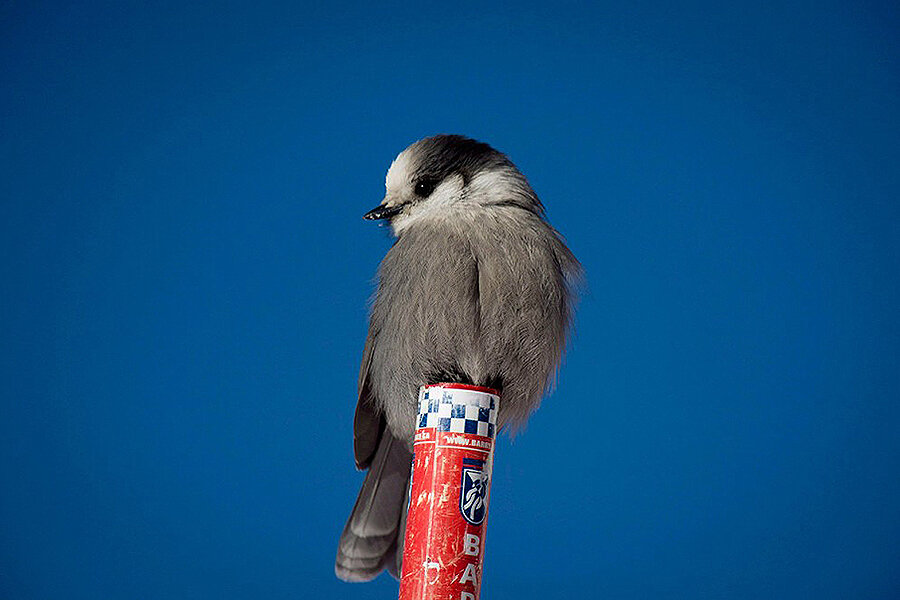Canada may get a national bird, but it's not who you think
After a two-year, nation-wide search, Canada may have finally landed on a national bird: the gray jay.
The robin-sized gray jay, also known as the whiskey jack – from the name for a trickster bird in indigenous folk tales, "Wisakedjak" – can be found in every province and territory, according to Canadian Geographic. It was chosen because it embodies the friendliness, hardiness, and intelligence of the country, the Royal Canadian Geographic Society said this week.
But the bird also represents the land itself – and Canadians' commitment to preserving it, according to the magazine.
"We are honoured to recommend the gray jay as a fresh symbol of our collective passion for natural environments, and our concern for their conservation and stewardship," editor Aaron Kylie said in a statement, according to the Canadian Broadcasting Corporation.
Almost 50,000 people voted in an online survey to choose the national bird, narrowing the search down to five choices, before the Society held a formal debate between expert ornithologists, each of whom represented one bird.
"They are a tough bird. The gray jay thrives in winter, nesting in the harshest, darkest month of the year and has been recorded incubating eggs in snowstorms at temps as cold as –30 C," Canadian Geographic said. "It has been known for centuries as a companion to Indigenous Peoples, early explorers and outdoor enthusiasts."
However, the little gray jay had fierce competition, and not everyone is satisfied with the choice.
Also in the top five was the Canada goose, whose name made it an obvious choice. The goose earned ardent support across the nation, including Mark Graham, the vice president of research and collections for the Canadian Museum of Nature.
"It bears our name. It is a northern bird; we are a northern country," Graham told CBC News. "Geese are smart and strong, qualities we like to assign to Canadians. Like Canadians, some adapt well to winter and stick around, and others fly south when it gets cold."
The black-capped chickadee, symbolizing unity, won the enthusiastic support of the nation's poet laureate, George Elliott Clarke. The snowy owl was also in the running for its fierce hunting skills, and the common loon was seen as "the people's bird."
But ultimately the gray jay won out.
"It's a wonderful poster child for the boreal forest, our national and provincial parks, and for climate change," ornithologist David Bird, who was part of the expert panel, told the Associated Press.
Canada does not yet have official plans to adopt the gray jay – or any bird – as a national symbol; the country's only animals with official symbol status today are the beaver and the Canadian horse. However, the Canadian Geographic Society is lobbying the federal government to use an act of Parliament to make the gray jay the national bird in 2017, to mark the nation's 150th birthday.
This report includes material from the Associated Press.







